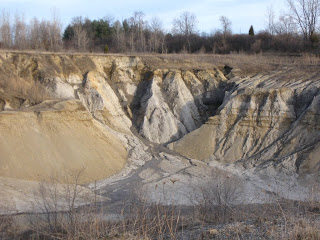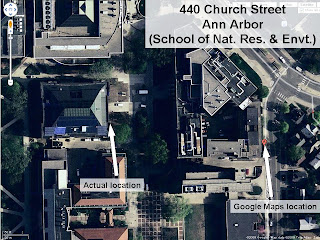A friend sent me this article from the
NYTimes Magazine Preview:
"The Civil Heretic", and asked:
why do some very smart people (although I always thought Dyson had some wacko sides, but let's leave it aside) think global warming is BS? How do we counter that?
Well, I think that Dyson is too much of an optimistic futurist. The man is someone who worships at the altar of technology, bows to the god of innovation, and likely worships in the same vein as science-fiction writers who see a utopian vision of the future. I would say that although Dyson is a fantastic physicist, he is not a climate change scientist, and therefore what he is doing is not climate change science, but climate change
issue advocacy. Now, a scientist in the field can be involved in advocating a position on the topic (thus making him a climate-change-science issue advocate), but Dyson is not such a man. Therefore, I think that his presumptions are based on his vast knowledge together with his idea of an unlimited near-future in which humans live.
We can't counter that.
I, on the other hand, love dystopianism. To hate the idea of dystopian futures only makes for a really unhappy environmental scientist engaged in climate change science and/or issue advocacy. (Note: I don't say that I would prefer a dystopian future, but that ideas of dystopian futures does not dog my cheerful outlook on life; some call me a
happy cynic and others just call me strange.) I am not a climate change scientist. I work with some, I work with many others who interpret the science using objective measures and provide advice/advocate positions.
My peers tend to be closer to my POV (i.e., films like
12 Monkeys, Mad Max, the Postman, Waterworld, and
Escape from NY/LA) than that of Dyson (i.e., films like
The Adventures of Buckaroo Banzai Across the 8th Dimension, Star Trek, Metropolis, and
Star Wars). Of course, there are people who like something that is not-quite-utopian (i.e., films like
Gattaca,
AeonFlux, and
Equilibrium) or not-quite-dystopian (i.e., films like
Brazil or
eXitenz). (NOTE: these categories are quite broad, and I
do like many of the films I listed as utopian, but I like the dystopian ones more; I just like SciFi.)
In addition to the POV issue, Dyson is also stuck somewhere between the idea that the scientific consensus on global warming is up-for-debate (e.g., like creationists keep claiming evolution to be) and the idea that this is a moral question. This creates two other issues that are psychological in nature. The first is that if a scientist finds him/herself in such a situation, especially if no immediate consequence of inaction is seen, that scientist is tempted to not act, because:
- There is no reason to act to change a course of events that can be gleefully studied (why else do people become scientists?);
- Acting to change the course of events runs counter to a scientific mentality that worships observation and testing as opposed to prevention (which would only have the end result in removing that thing which scientists gleefully like to do: study the phenomenon); and
- The longer one waits, the more data can be used to bring to bear on the topic at hand, since a lot of science is inherently backward-looking (i.e., based on observations of prior tests);
Note that I'm not putting anything in here about the possibility that Dyson has his own axe to grind on this topic.
How can we counter Dyson? We can't because by the time we see incontrovertible evidence of global warming, he will likely be long-dead. You cannot change his point-of-view. Furthermore, because of the long time-periods involved with global warming (versus the relatively short time-periods of human consciousness and understanding), people will have a shifted baseline of expectation vis-a-vis what a climate "should" look like, based on their own life experiences (since one cannot personally experience the lives of our forebears), which makes me pessimistic about future "visceral" (as opposed to learned/taught) understandings. The easiest thing to do would be to make him a non-entity in the debate; to sideline him into non-existence. This is what people have tried to do with ad hominem attacks (he's a kook, he's over-the-hill, etc.), mostly without success, since physicists (who make up a large percentage of the climate modelers) still tend to worship at the altar of Dyson. A more likely tactic is to change the frame of the debate away from what Dyson is perceived of as an expert; to social impacts, for example. I'm sure that to many American social scientists, the name "Dyson" only means vacuum-cleaner.
Of course, like a lot of my drivel on this blog, I could well be wrong about one, some, or all parts of this entry. (Well, perhaps not "all" parts of this entry, since I
do like the films I listed.)
On a side note, I wonder how many scientists in different fields "believe" in the veracity of global warming science. Are there trends in this "belief" as one saw in scientist belief in creationism and Bible literalism...

















